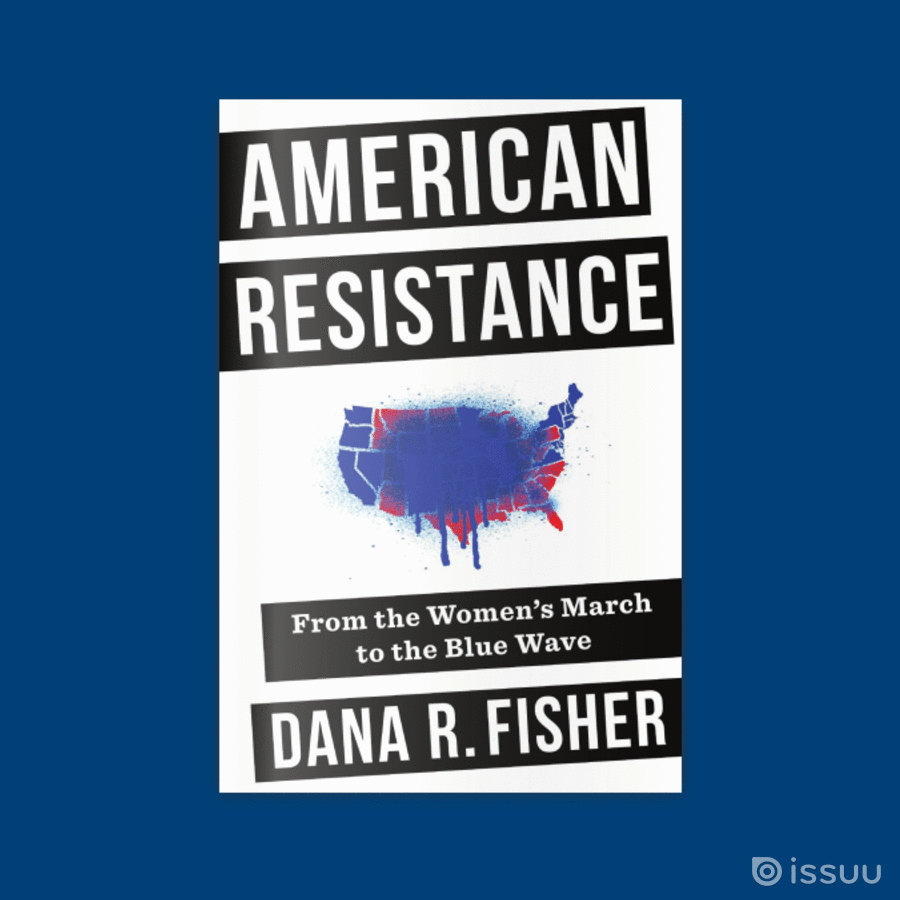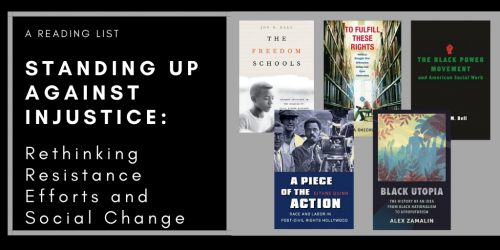Resisters in the 2020 Election and Beyond
By Dana R. Fisher

“American Resistance is an important book, not only as a portrait of our moment but also as a challenge to traditional understandings of protest politics. Dana R. Fisher shows how wrong it is—especially in the Trump era—to draw sharp lines between protest and electoral action. She details what drove millions to come out in revolt against Trump, explains who they are, and demonstrates how the early marches translated into the unprecedented political engagement of 2018. There are lessons here for 2020 and beyond.”
~E. J. Dionne, Jr., coauthor of One Nation After Trump: A Guide for the Perplexed, the Disillusioned, the Desperate, and the Not-Yet Deported
It’s University Press Week 2020, and today’s theme is “Active Voices.” Dana R. Fisher, author of American Resistance, has been following a sample group of protesters since 2017. In this post she discusses how their motivations and resistance efforts have changed in the past four years. This piece was adapted from the Washington Post article, “The original Women’s Marchers are still a political force.”
• • • • • •
Since Donald Trump took office, millions of people have marched in the streets to protest the administration and its policies. The first event, the 2017 Women’s March, was the largest single-day demonstration in recorded U.S. history. As I discuss in American Resistance, the Women’s March in 2017 was the spark that ignited the anti-Trump Resistance, which mobilized left-leaning Americans to march in the streets at numerous demonstrations that were focused on a range of progressive issues. Since 2017, I have followed a random sample of those Resisters who marched for women’s rights, climate change, gun control, racial justice, and so much more.
In October 2020, I followed up with this sample to see how they have been participating in politics during the pandemic and what was motivating their activism. By the time the survey closed at the end of the month, 216 participants from the original wave of data collection had completed the follow-up study, representing a 29 percent response rate. Given the time that has elapsed between some of the protests where respondents were surveyed and now, this response rate is better than I expected (and it is higher than the response rate for my follow-up survey with the sample right after the midterm elections in November 2018).
Resisters’ Motivations Have Shifted
When originally surveyed while protesting in the streets, few participants identified racial justice and police brutality as among their top motivations. At the 2017 Women’s March, respondents were asked to write in their reasons for attending; people could write as many as they wanted. Those data were coded into issues and counted, and racial justice and police brutality/Black Lives Matter emerged as distinct categories (my fellow researchers and I discuss how these categories are related in this article). In subsequent protests, participants were asked to check off what issues were motivating them from the list of fourteen issues that emerged from the data from that first march (plus an “other” category to write in). These data make it possible to understand the most common motivations and also assess patterns of motivations across the marches.
When we surveyed participants at that first Women’s March, 61 percent named women’s rights as a motivation for taking to the streets, and only 18 percent mentioned police brutality/Black Lives Matter. That percentage has changed since a Minneapolis police officer murdered George Floyd and Black Lives Matter organized and led sustained mass demonstrations across the United States. In the more recent survey this fall, when asked what motivated their activism and political work, 71 percent of that group mentioned police brutality/Black Lives Matter. Similarly, of the protesters we sampled at the 2018 March for Our Lives, coordinated by the Parkland school shooting’s young survivors, only 36 percent said that they were motivated by police brutality/Black Lives Matter; in this more recent survey, 82 percent listed that issue as a motivation.
Resisters Are Voting and So Much More
In the two years since I last contacted them, these Resisters have continued to be very civically engaged. Fully 74 percent say they have contacted an elected official in the past year; 38 percent say they attended a town hall meeting, which includes online town hall meetings, since the pandemic began. Eighty-one percent report having voted in the past year, which includes ballots cast in primary elections and as part of early voting for the 2020 election. That’s an even higher voting rate than the 75 percent reported by participants at the January 2019 Women’s March, just after midterm elections (nationally, 53 percent of the voting-age population participated in the 2018 elections). Almost all respondents (98 percent) reported that they were supporting Joe Biden for president.
About half of these Resisters (48 percent) report working on the election in a variety of ways with the Democratic Party, individual campaigns, and political groups like Swing Left. Given the pandemic, very few reported any involvement in face-to-face meetings or door-to-door canvassing. However, their involvement has included donating money, phone banking, text banking, and registering voters.
Notably, these Resisters have found ways to stay engaged during the pandemic, despite the fact that, with a median age of 51, many are at higher risk for contracting COVID-19. This level of participation in the 2020 election suggests that these activists will continue to be politically involved well into the future. The big question that remains at this point is how they will be participating in politics moving forward.






